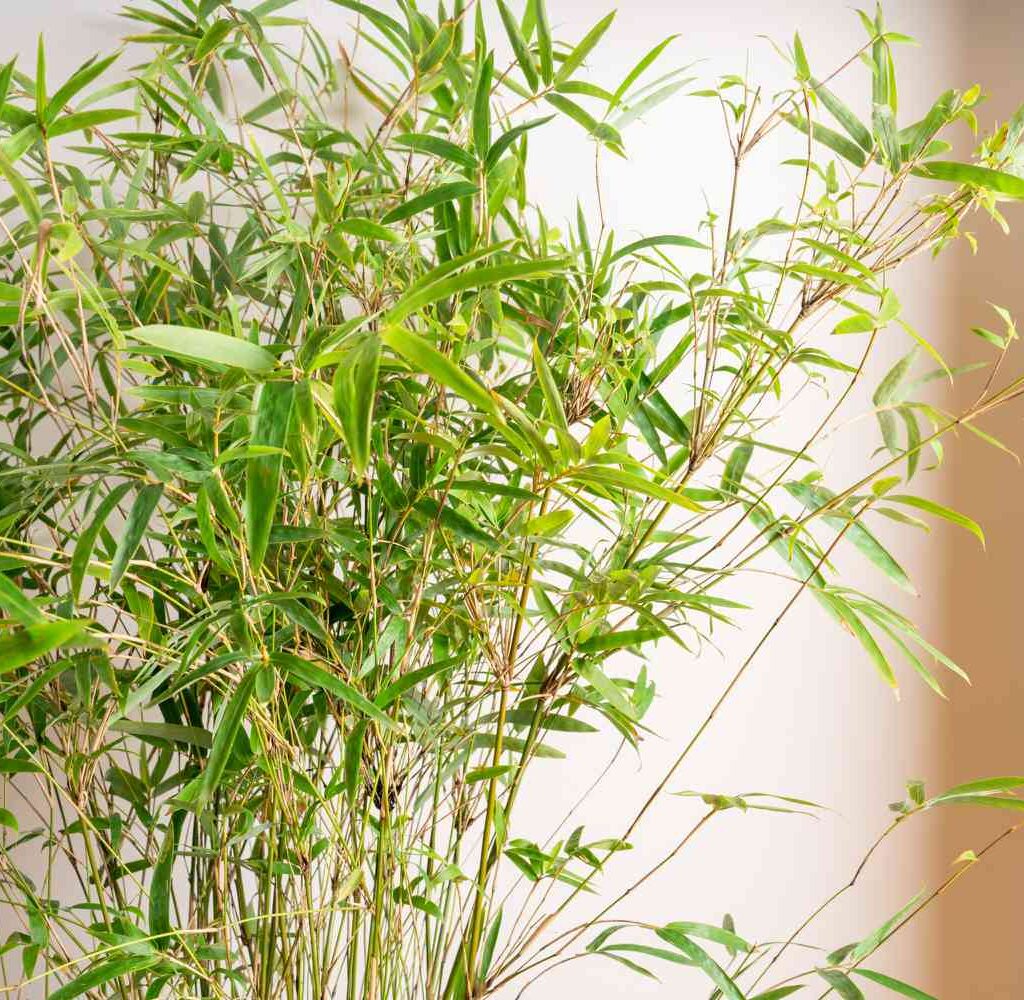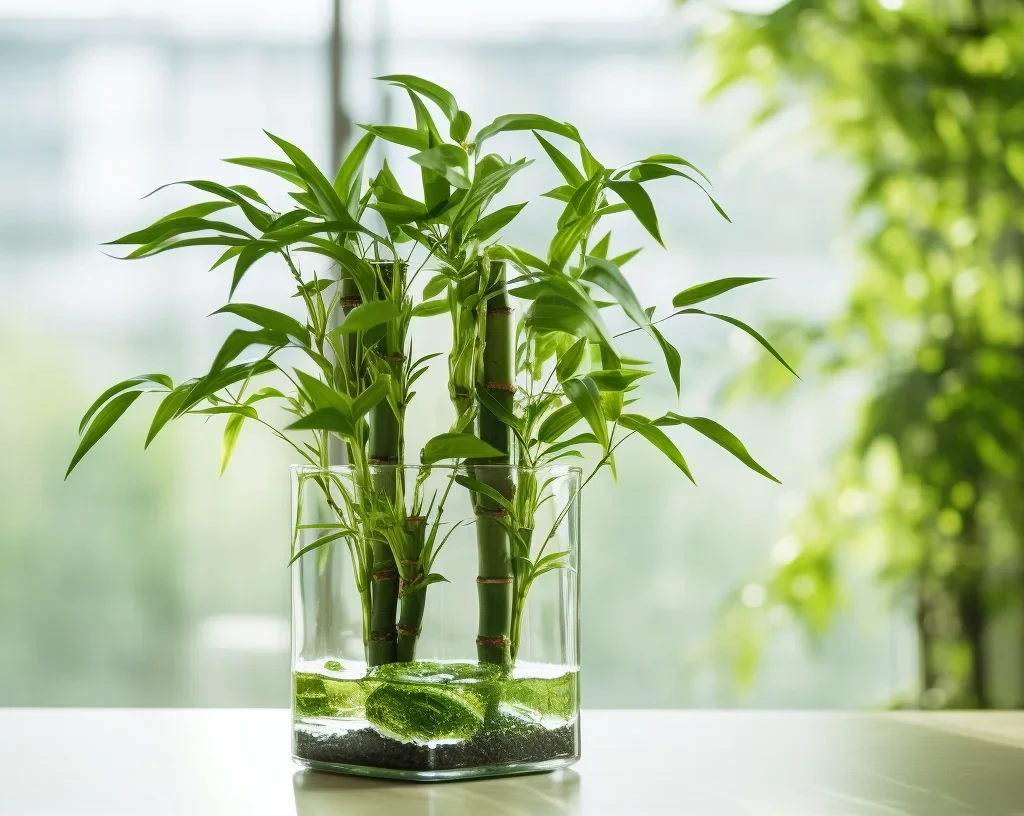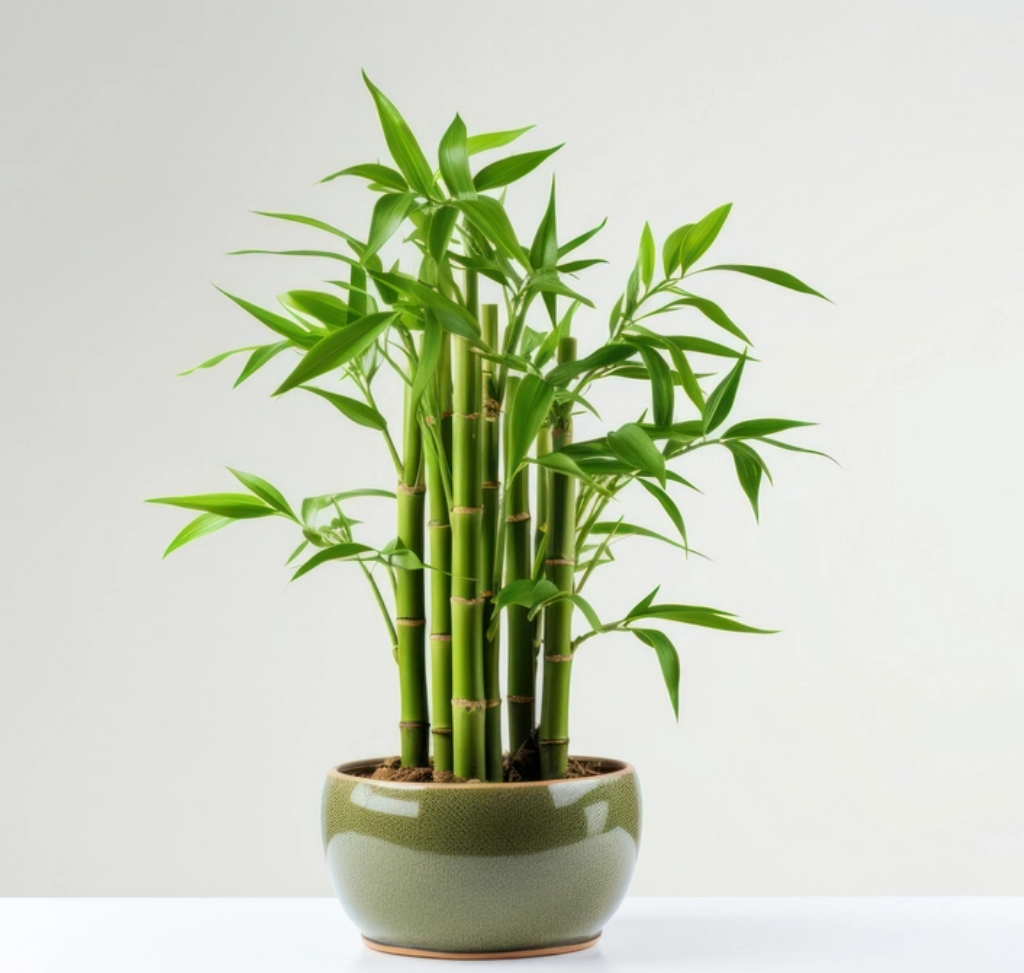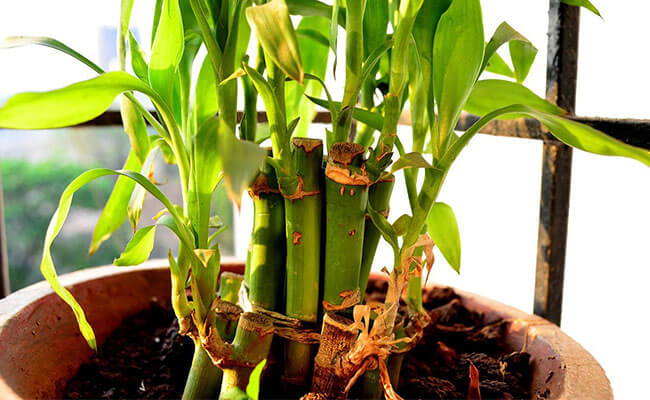Bamboo plants have long been associated with beauty, strength, and good fortune. Whether you’re growing an ornamental bamboo plant indoors for aesthetic appeal or cultivating hardy varieties outdoors for privacy hedges, knowing how to care for bamboo properly is essential for maintaining its health and lush appearance.
While bamboo is often labeled as a low-maintenance plant, it still has specific care needs that, when met, can help it thrive for years. This guide will walk you through everything you need to know — from light and water requirements to soil preferences and pruning techniques — to grow a healthy, vibrant bamboo plant.

Types of Bamboo Plants
Before diving into care tips, it’s helpful to understand the different types of bamboo you might encounter:
Lucky Bamboo (Dracaena sanderiana)
- Technically not a true bamboo but commonly known by the name.
- Popular as an indoor plant.
- Grown in water or soil.
- Symbol of good fortune in feng shui.
True Bamboo (Bambusoideae)
- Includes clumping and running varieties.
- Ideal for outdoor hedges, privacy screens, or ornamental gardens.
- Some dwarf varieties can be grown indoors with proper care.
Knowing your plant type ensures you can meet its specific needs.

Light Requirements for Bamboo Plants
Bamboo plants have varying light requirements depending on the species and where you’re growing them.
Indoor Bamboo (Lucky Bamboo)
- Thrives in bright, indirect light.
- Avoid direct sun, which can scorch leaves.
- Can tolerate low light but grows slower and may become leggy.
Tip: If placed in a darker room, occasionally move your bamboo plant to a brighter spot for a few hours to maintain its health.
Outdoor Bamboo
- Prefers full sun to partial shade, depending on the species.
- Tropical bamboos may appreciate some afternoon shade in hot climates.
- In cooler climates, full sun helps encourage upright, dense growth.

How to Water Bamboo Plants Properly
Water is crucial for bamboo, but the amount and frequency depend on whether it’s indoors, outdoors, in water, or soil.
Indoor Bamboo (Lucky Bamboo in Water)
- Keep water level at least an inch above the roots.
- Change water every 7–10 days to prevent algae and bacteria.
- Use distilled or filtered water as tap water chemicals (chlorine and fluoride) can cause leaf browning.
Pro Tip: Add decorative pebbles to anchor stems and prevent toppling.
Indoor Bamboo in Soil
- Water when the top 1-2 inches of soil feels dry.
- Avoid waterlogged soil — good drainage is key.
- Mist leaves occasionally in dry environments to maintain humidity.
Outdoor Bamboo
- Water deeply 1–2 times a week, more during hot or dry spells.
- Newly planted bamboo needs frequent watering until established.
- Mulch around the base to retain moisture and regulate soil temperature.

Soil Preferences for Bamboo
Healthy bamboo requires well-draining soil, rich in organic matter.
Indoor Bamboo (Lucky Bamboo)
- Grows well in water with pebbles or in loose, well-aerated soil.
- Use a mix of potting soil, sand, and perlite for drainage.
Outdoor Bamboo
- Prefers loamy, slightly acidic to neutral soil (pH 6.0–7.0).
- Avoid heavy clay or waterlogged areas.
- Improve poor soil with compost, aged manure, or organic matter.
Temperature and Humidity Needs
Bamboo plants generally enjoy warm, humid conditions, though some varieties tolerate cold better than others.
Indoor Bamboo
- Ideal temperature: 65°F to 90°F (18°C–32°C).
- Avoid placing near heating vents, AC units, or cold drafts.
- Maintain moderate humidity; mist leaves or place a pebble tray with water nearby during dry seasons.
Outdoor Bamboo
- Most hardy bamboos withstand temperatures down to -20°F (-29°C).
- Tropical varieties need protection when temperatures drop below 40°F (4°C).
- Provide winter mulch in colder climates to insulate roots.
Pruning and Maintenance
Regular pruning helps bamboo plants stay healthy, attractive, and manageable.
Indoor Bamboo
- Remove yellowing or dead leaves regularly.
- Trim offshoots or long roots if growing in water.
- Prune overly tall stems for a compact, tidy shape.
Outdoor Bamboo
- Thin out old, dead, or weak culms (stems) yearly.
- Cut back running bamboo shoots to control spreading.
- Prune to shape and maintain privacy screens or hedges.
Fertilizing Bamboo Plants
While bamboo isn’t a heavy feeder, regular fertilizing encourages vigorous growth.
Indoor Bamboo (Lucky Bamboo)
- In water: Add a liquid houseplant fertilizer (1/10 strength) every 2–3 months.
- In soil: Use a balanced 10-10-10 fertilizer during the growing season (spring-summer).
Outdoor Bamboo
- Apply a high-nitrogen fertilizer (20-5-5) in spring for lush, leafy growth.
- Feed again mid-summer if needed.
- Mulch with organic compost to naturally enrich the soil.
Common Pests and Problems
While bamboo is relatively resilient, it’s not immune to issues.
Common Pests:
- Spider mites: Tiny webbing and speckled leaves.
- Aphids: Sticky residue and leaf curling.
- Mealybugs: White, cotton-like patches on stems.
Solution: Wipe with insecticidal soap or neem oil, and improve air circulation.
Common Issues:
- Yellowing leaves: Often due to overwatering, poor drainage, or chlorine in tap water.
- Root rot: Caused by soggy soil or stagnant water.
- Leaf scorch: From excessive direct sunlight or chemical exposure.
Tip: Adjust water, light, and soil conditions at the first sign of trouble.
How to Propagate Bamboo
Propagation is a cost-effective way to expand your bamboo collection.
Indoor Lucky Bamboo
- Cut healthy stems with at least one node.
- Place in fresh water until roots form (2-4 weeks).
- Transfer to soil or a water container.
Outdoor Bamboo
- Divide clumps during early spring.
- Use a sharp spade to separate root sections with several culms.
- Replant immediately and water generously.
Best Placement for Bamboo Plants
Strategic placement enhances both plant health and your home’s feng shui.
Indoor Lucky Bamboo
- Place in living rooms, offices, or hallways with indirect sunlight.
- Avoid dark corners or direct sun exposure.
- In feng shui, position bamboo in the east or southeast for prosperity and health.
Outdoor Bamboo
- Use as privacy screens, windbreaks, or garden accents.
- Plant running varieties with a root barrier to control spread.
- Space clumping bamboos 3-5 feet apart for dense hedges.
Final Thoughts
Bamboo plants are versatile, attractive, and deeply symbolic, whether you’re cultivating a lucky bamboo arrangement indoors or creating a lush outdoor privacy screen. By understanding their basic care requirements — proper watering, light, soil, and pruning — you can enjoy vibrant, healthy bamboo plants for years.
Remember:
- Use well-draining soil and avoid waterlogging.
- Provide bright, indirect light for indoor plants.
- Regularly prune and fertilize during active growth.
- Watch for pests and environmental stress signs.
With these tips in hand, your bamboo plants will not only survive but thrive, bringing beauty, tranquility, and a touch of nature into your home and garden.







Leave A Comment